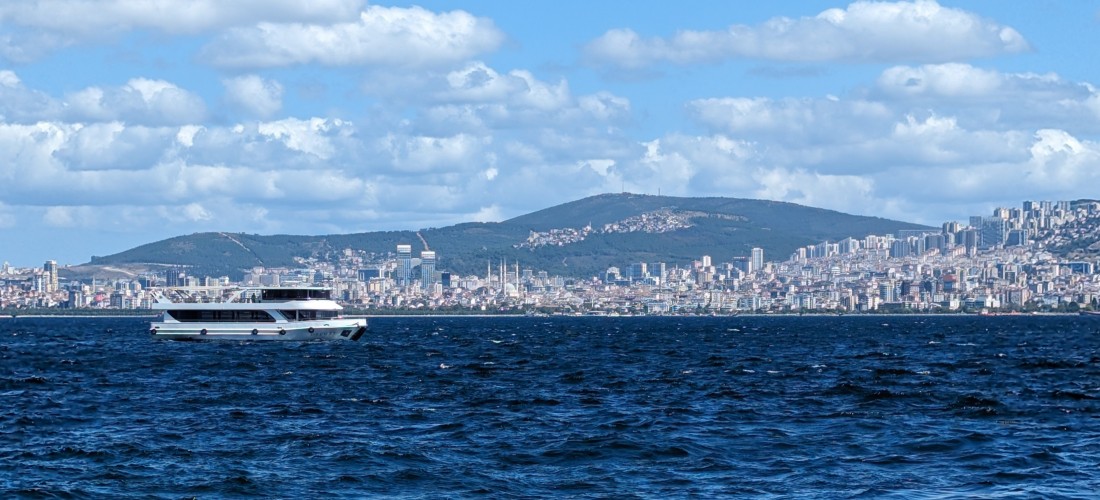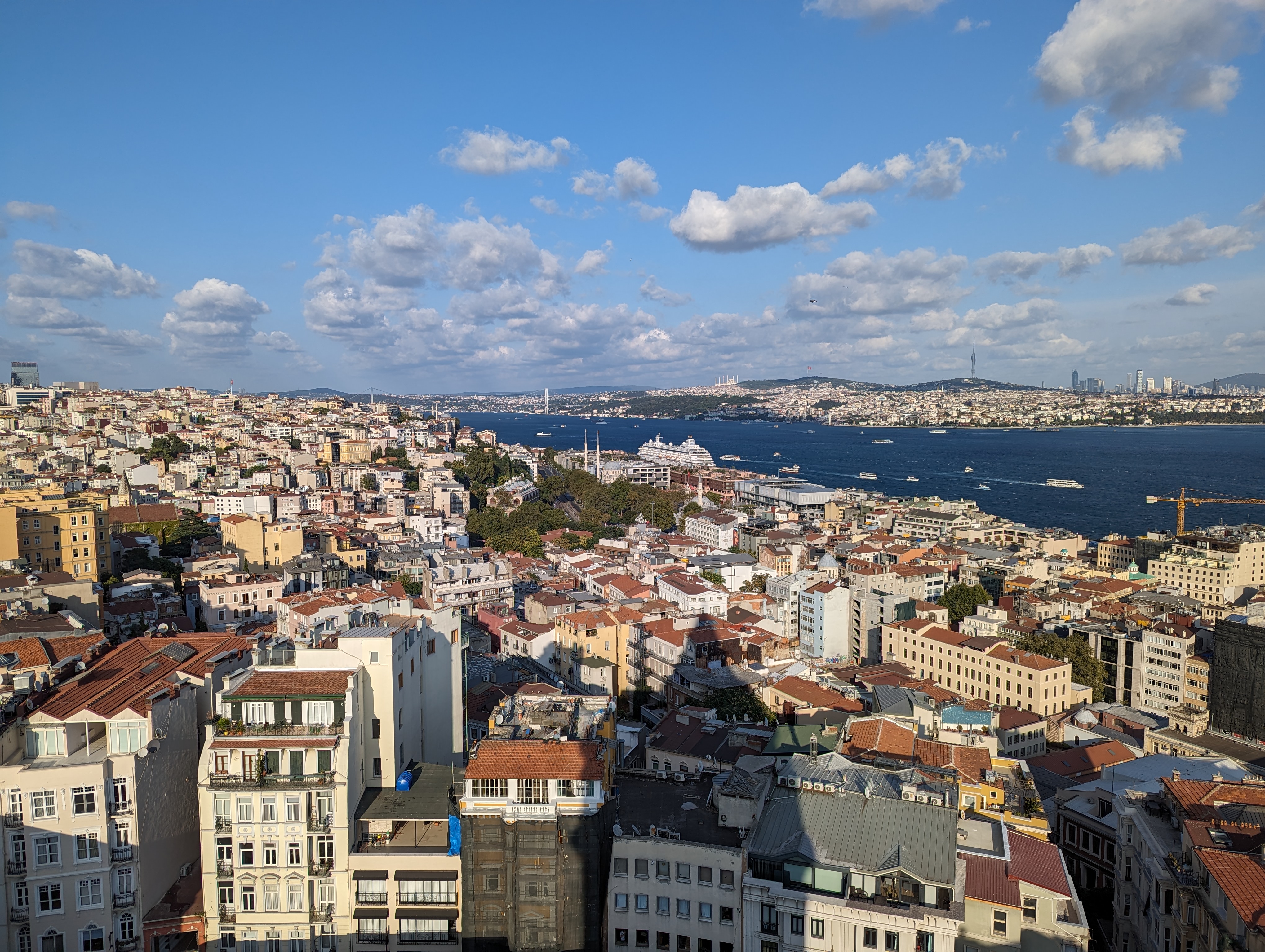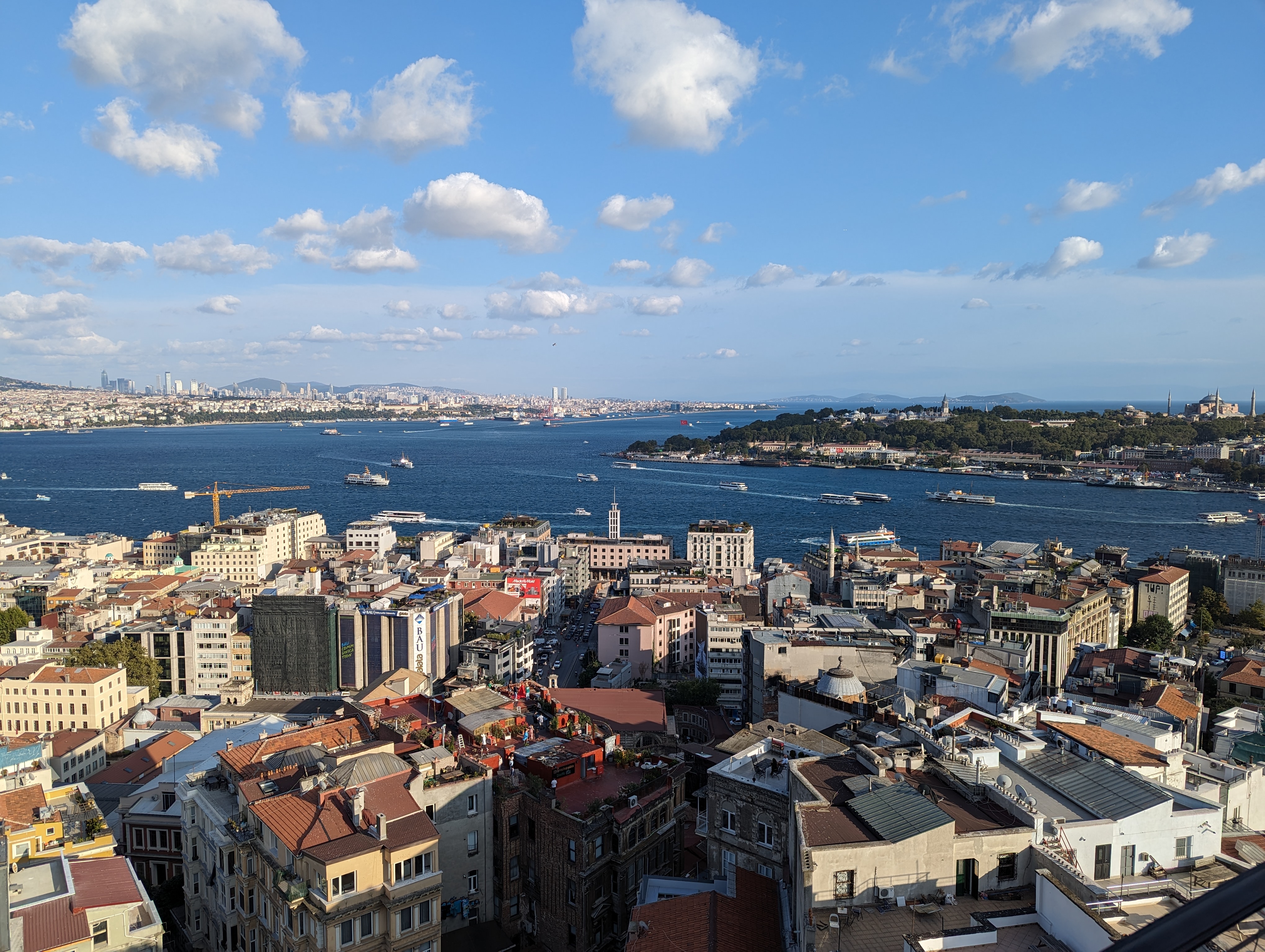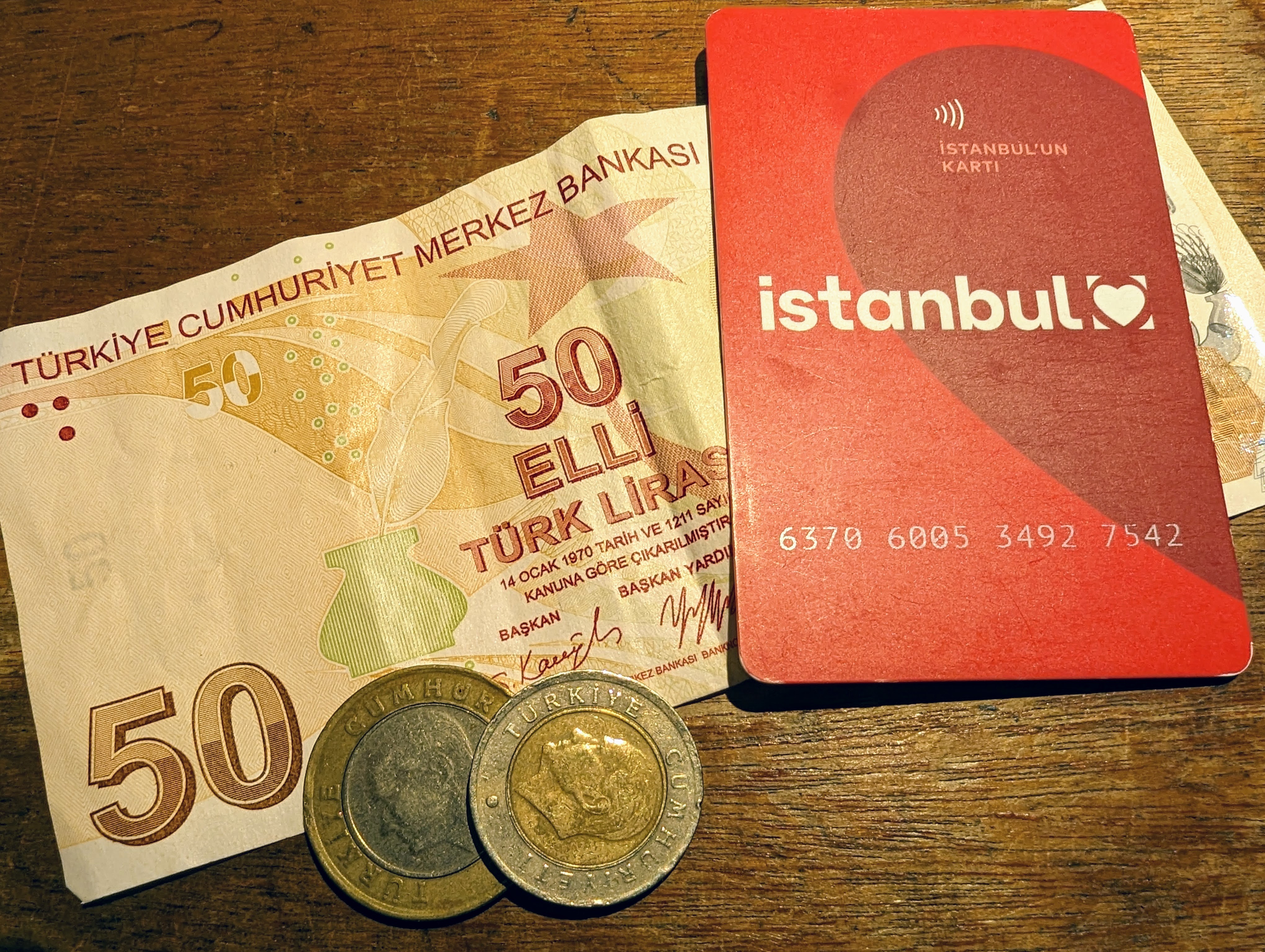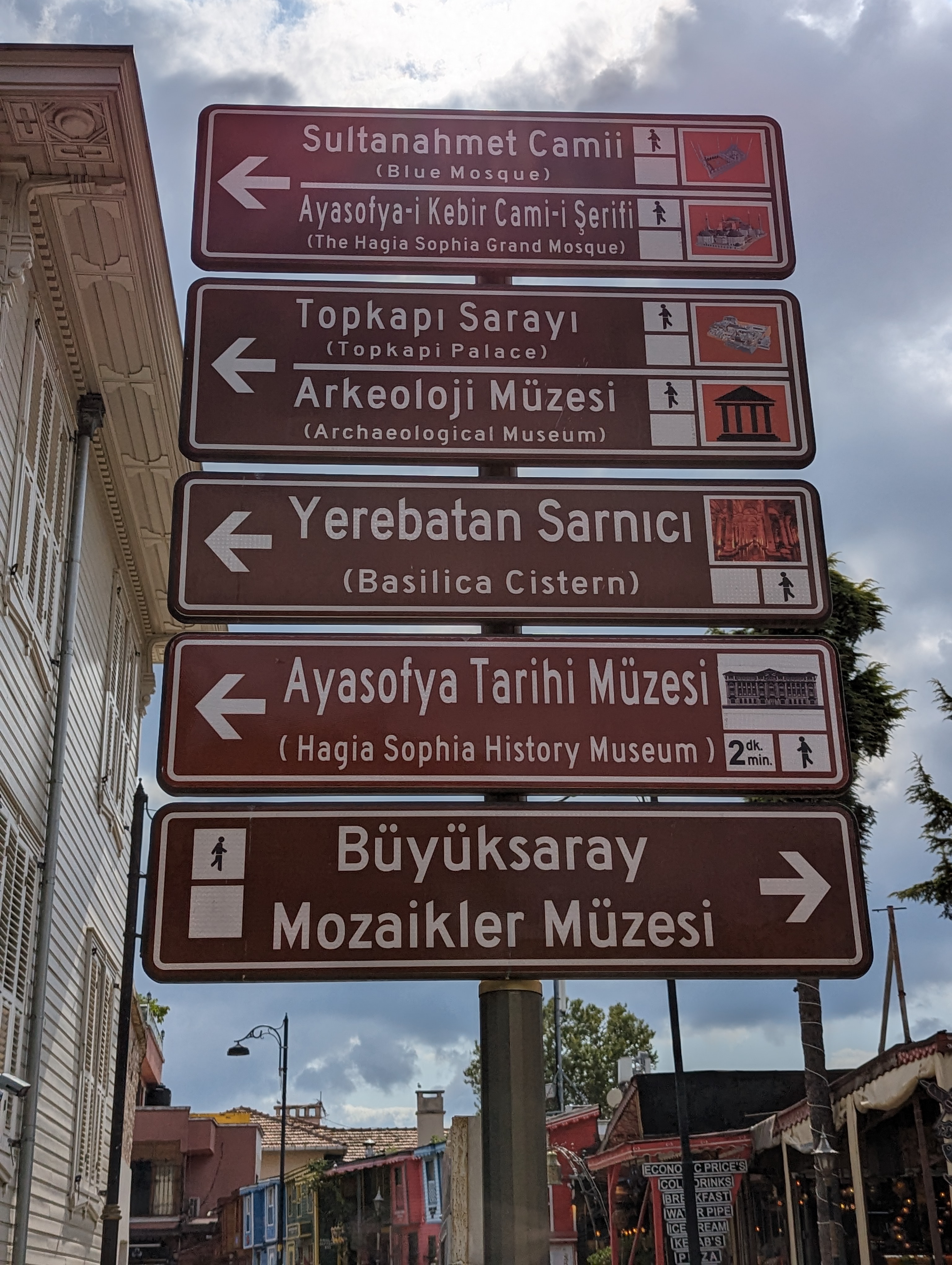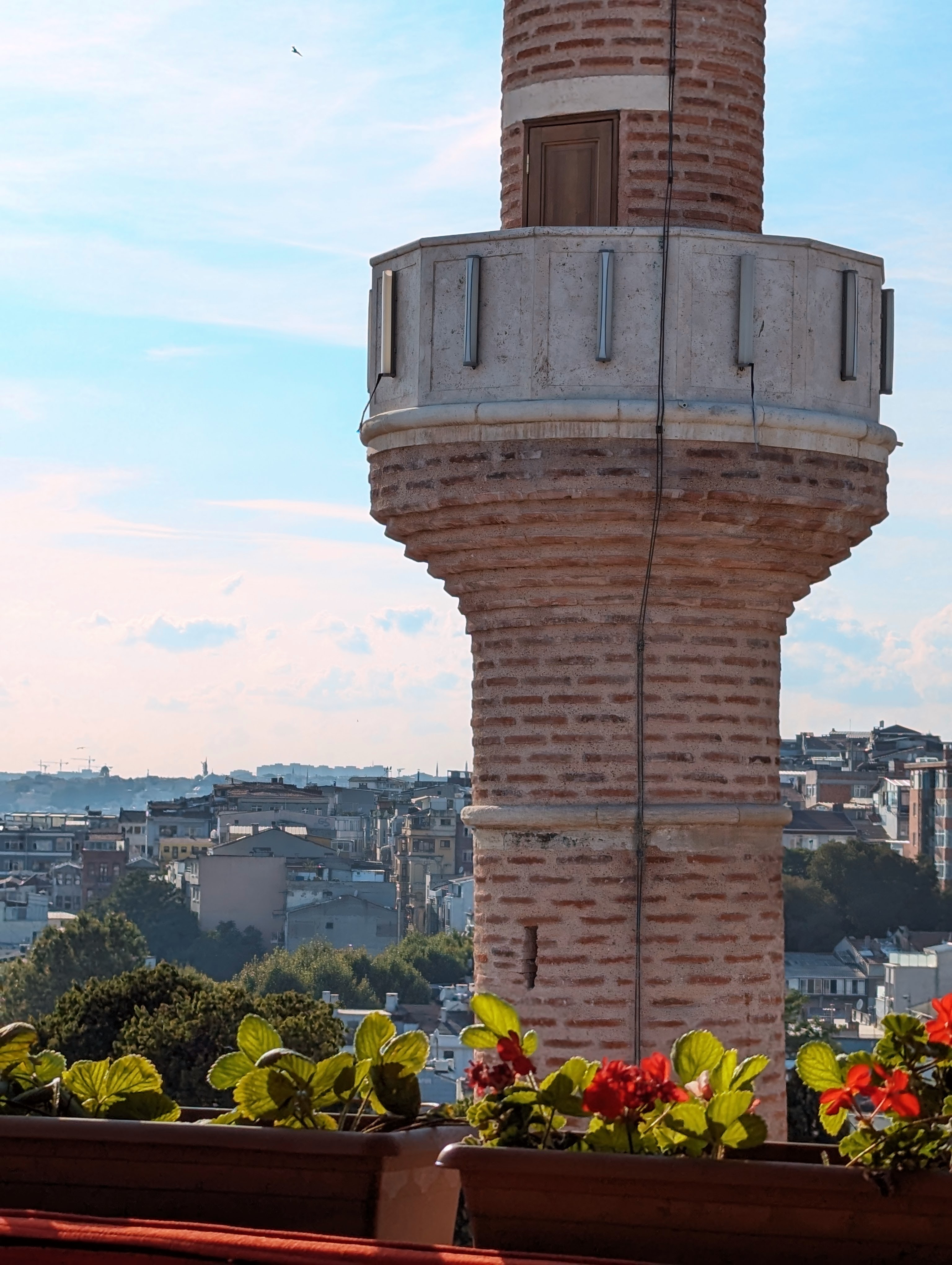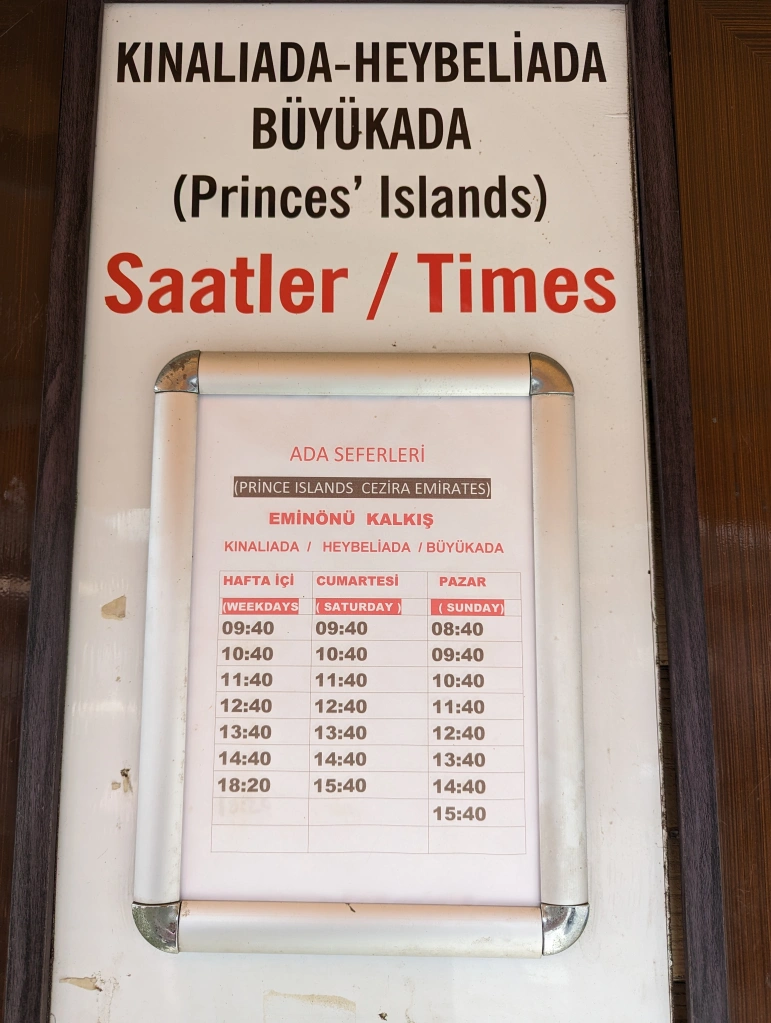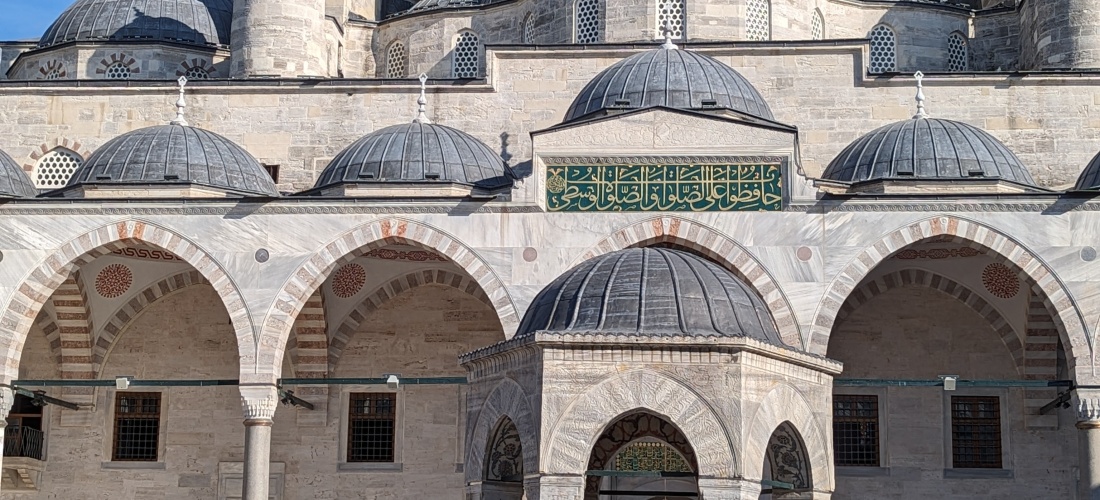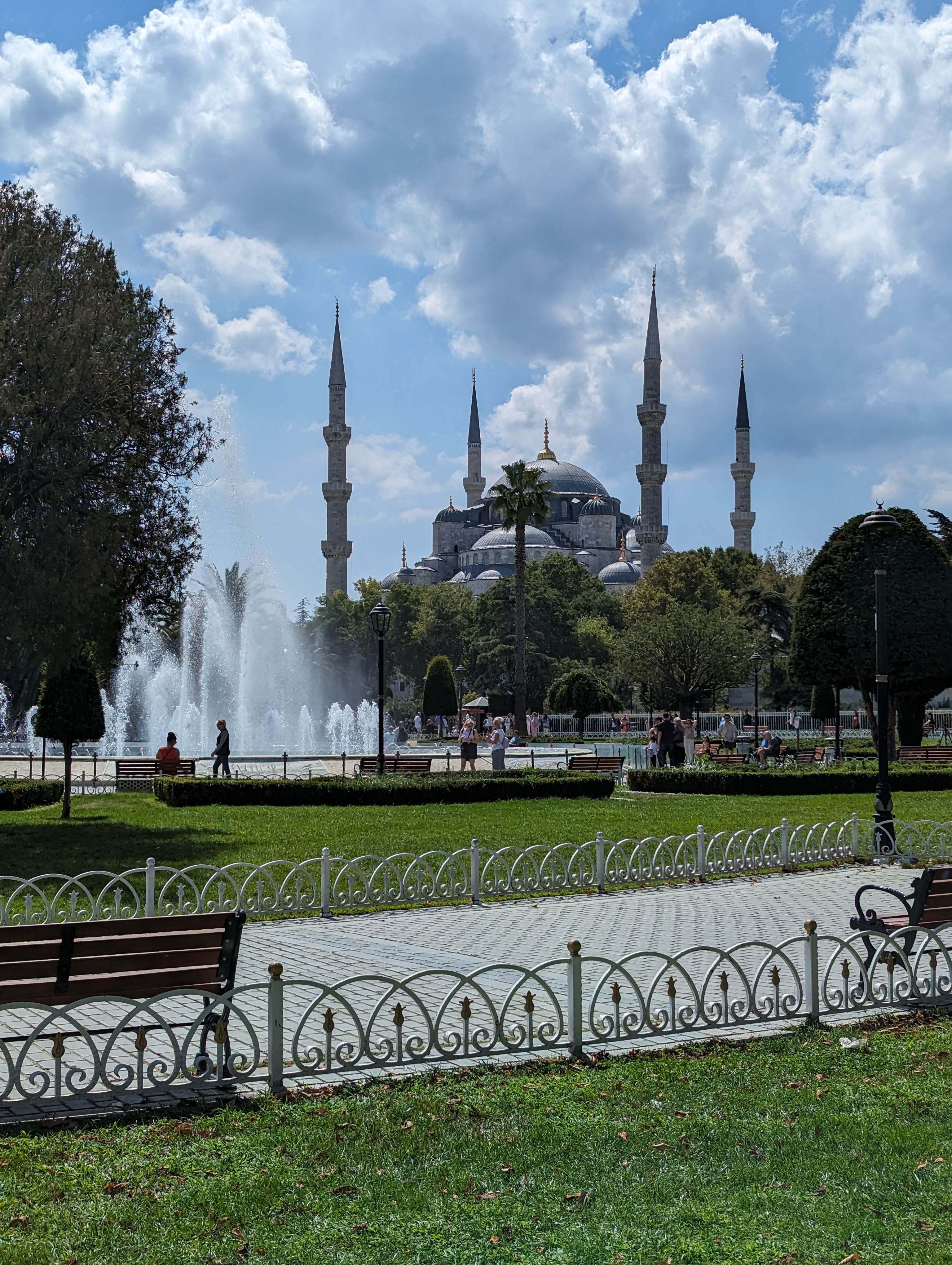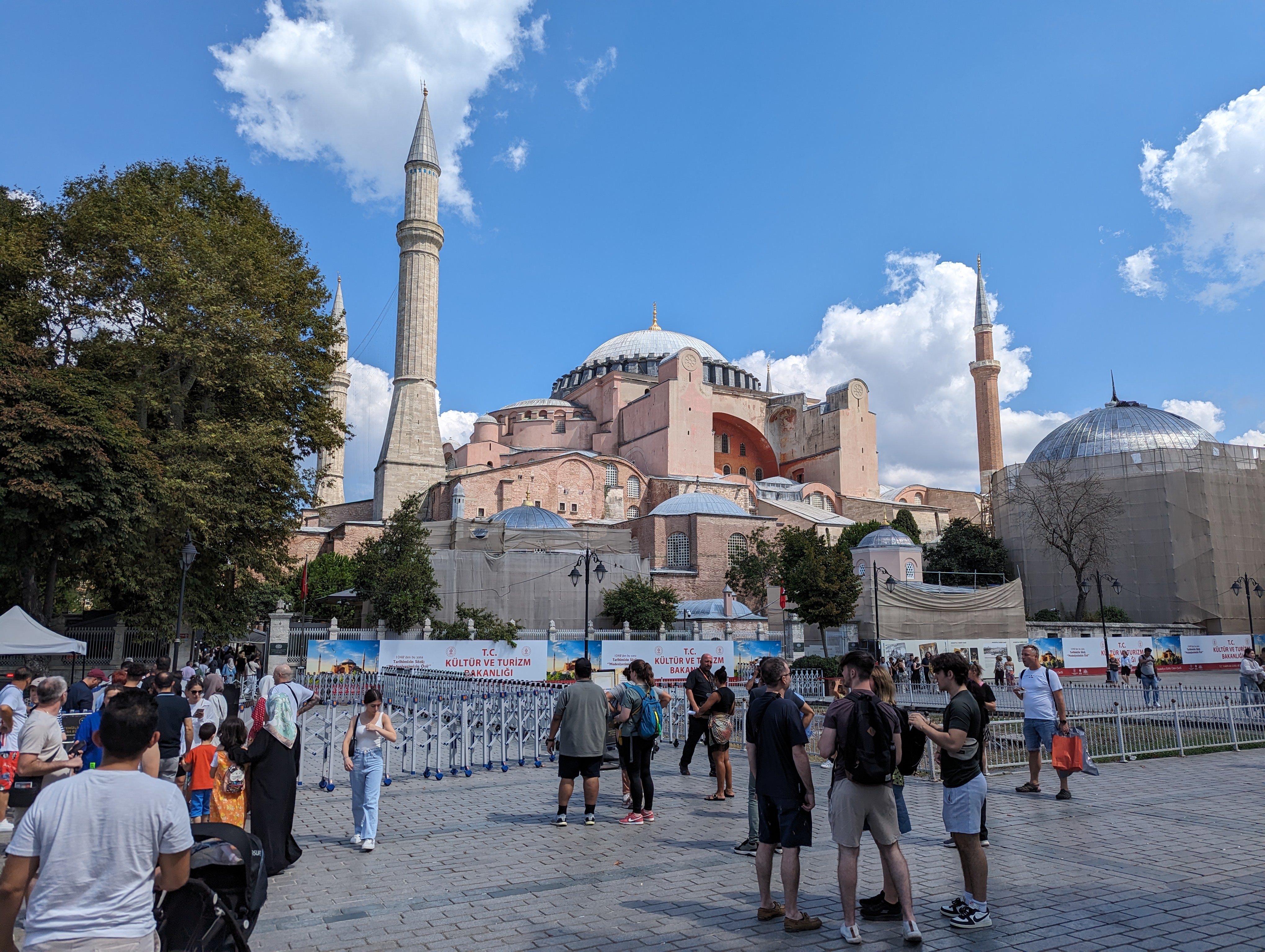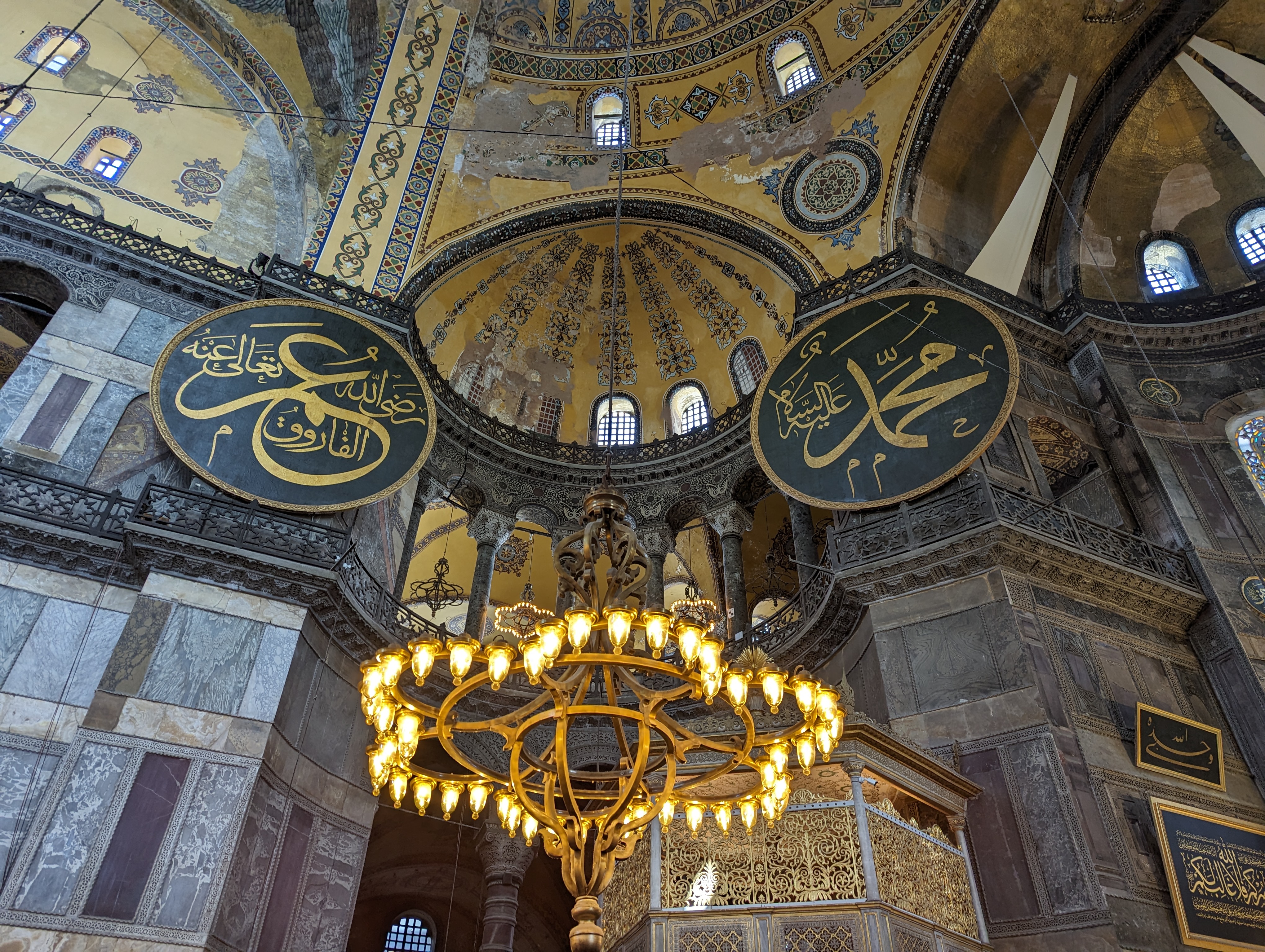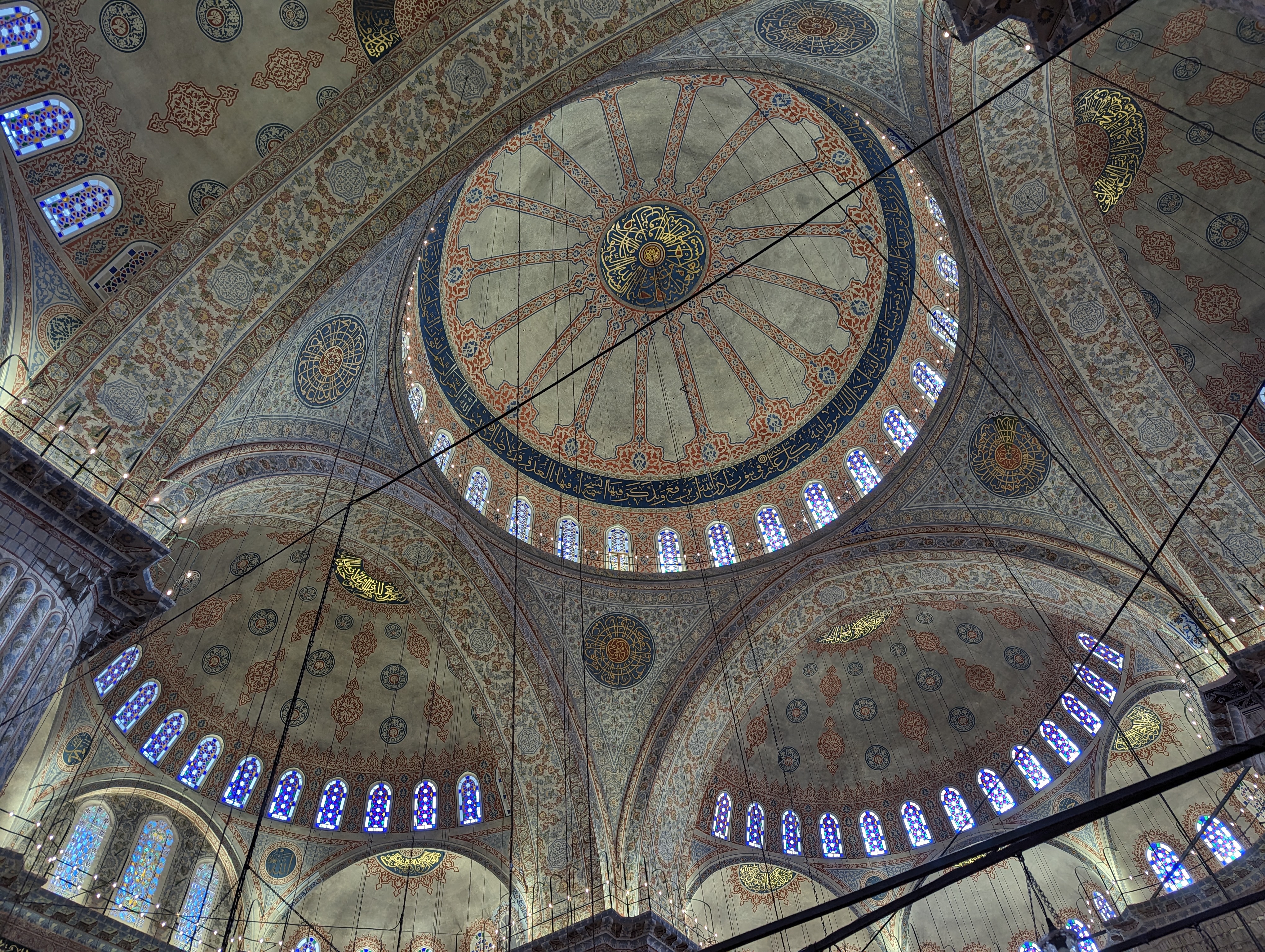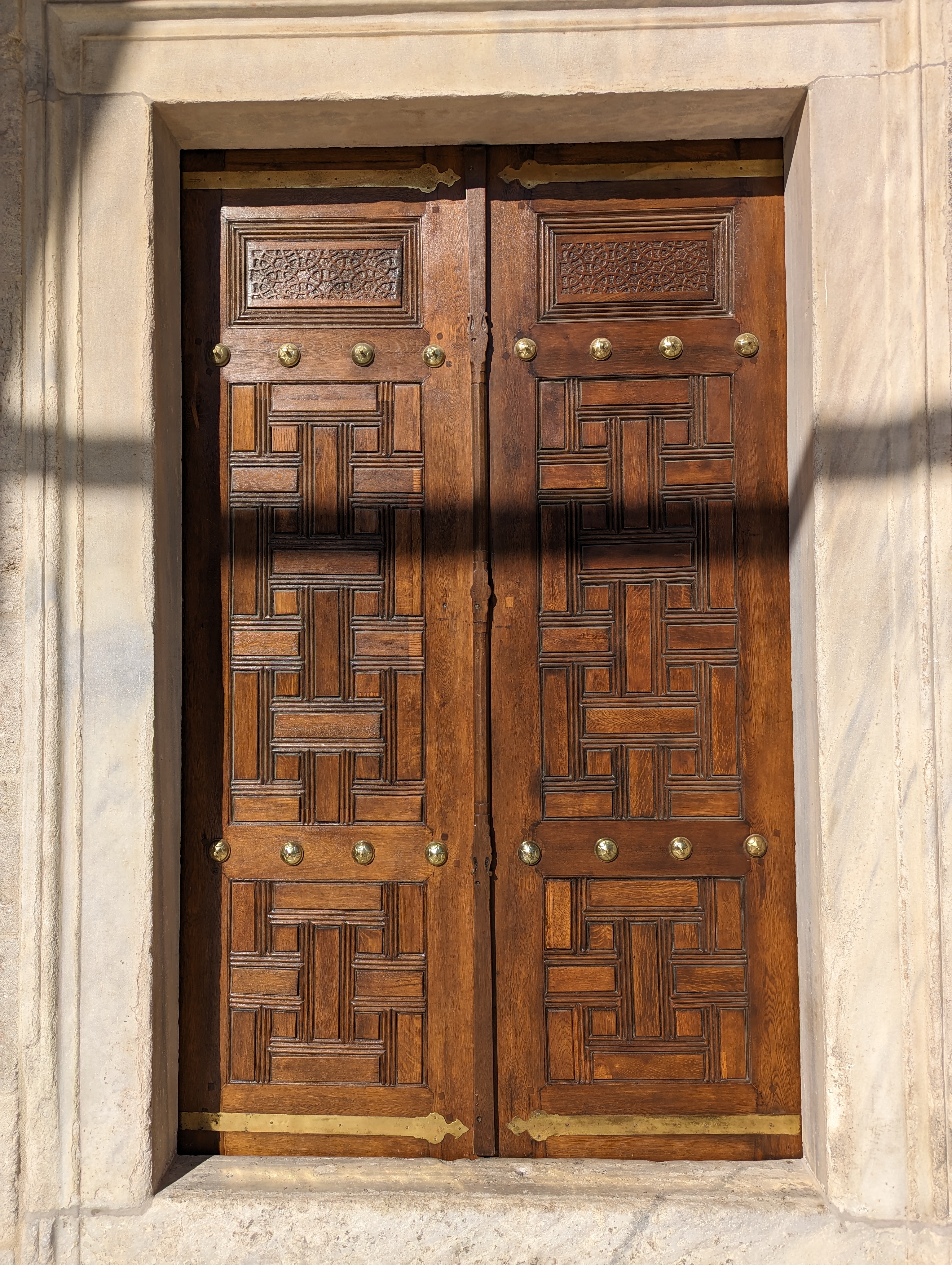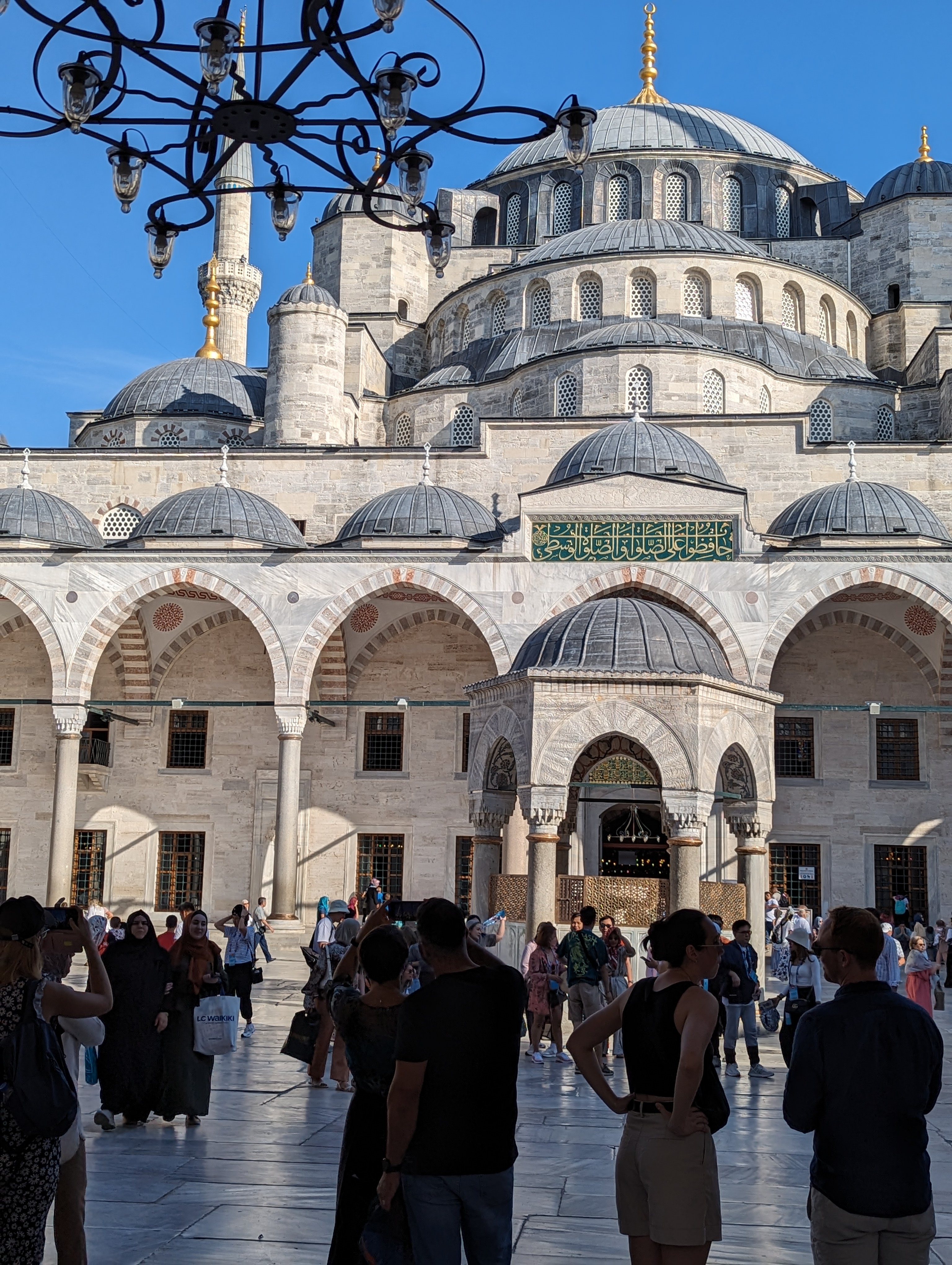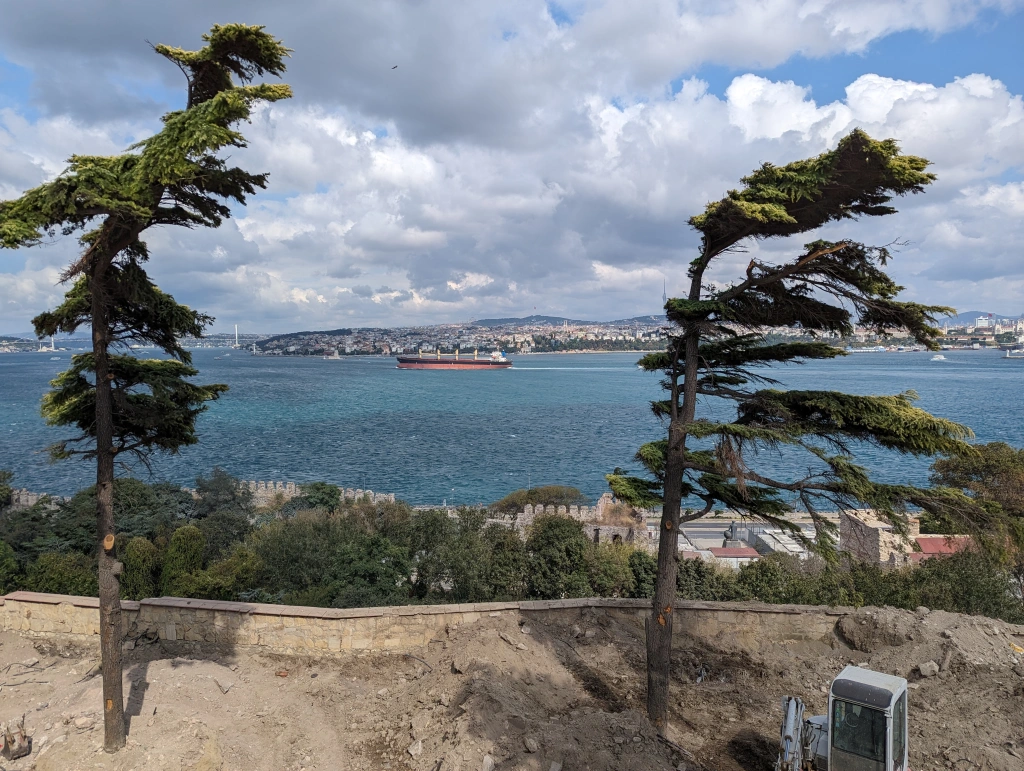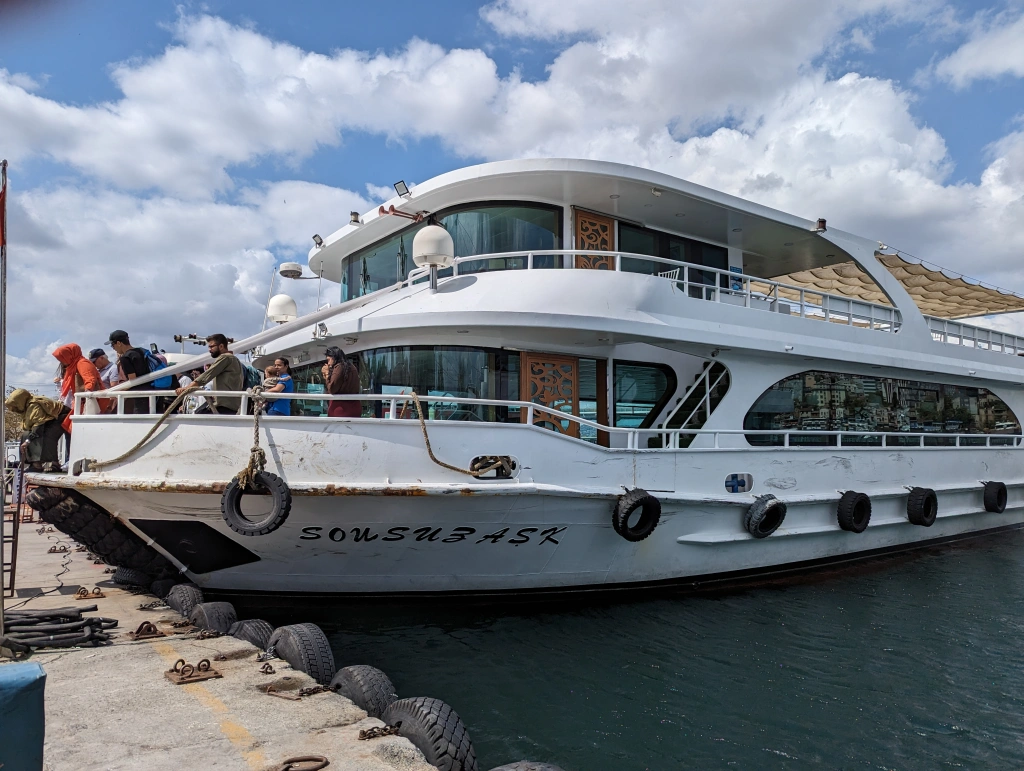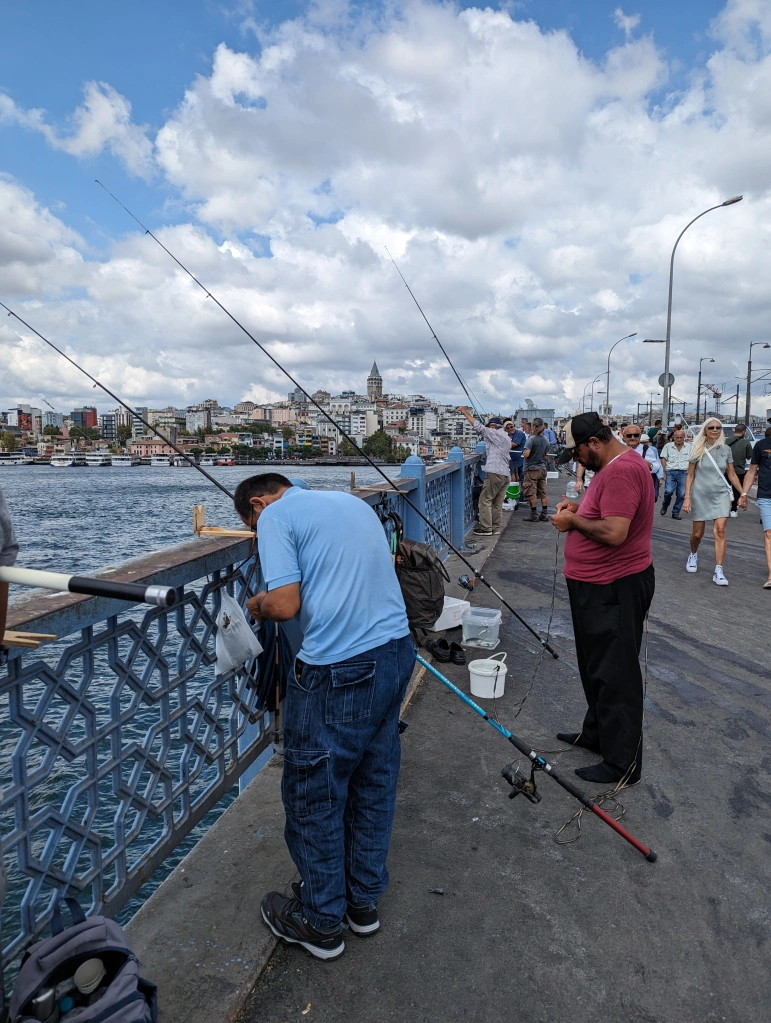Having now been to İstanbul and returned home, every time I see the city on the TV, there is one landmark that I am always on the lookout for: The Galata Tower. If nothing else, it is a perfect way of referencing İstanbul, and you can quickly and easily work out whereabouts in the city you are by taking sight of this notable structure. The Galata Tower was built in the 14th Century and replaced a much earlier, wooden version, and is siutuated in the Galata Neighbourhood of Beyoğlu, across the Haliç from Sultanahmet.
So I decided it was time to cross the Golden Horn from Sultanahmet to Karaköy and Beyoğlu. You can do this numerous ways: by metro, tram, bus, ferry or by the method I chose, on foot. Galata Bridge itself is a hubub of activity. Interestingly, it has 2 levels, so as far as the central arch where the boats pass through, you can walk underneath past rows of resturants and cafes. On top, you have innumerable fishermen tryng their luck with the busy, churning waters below.
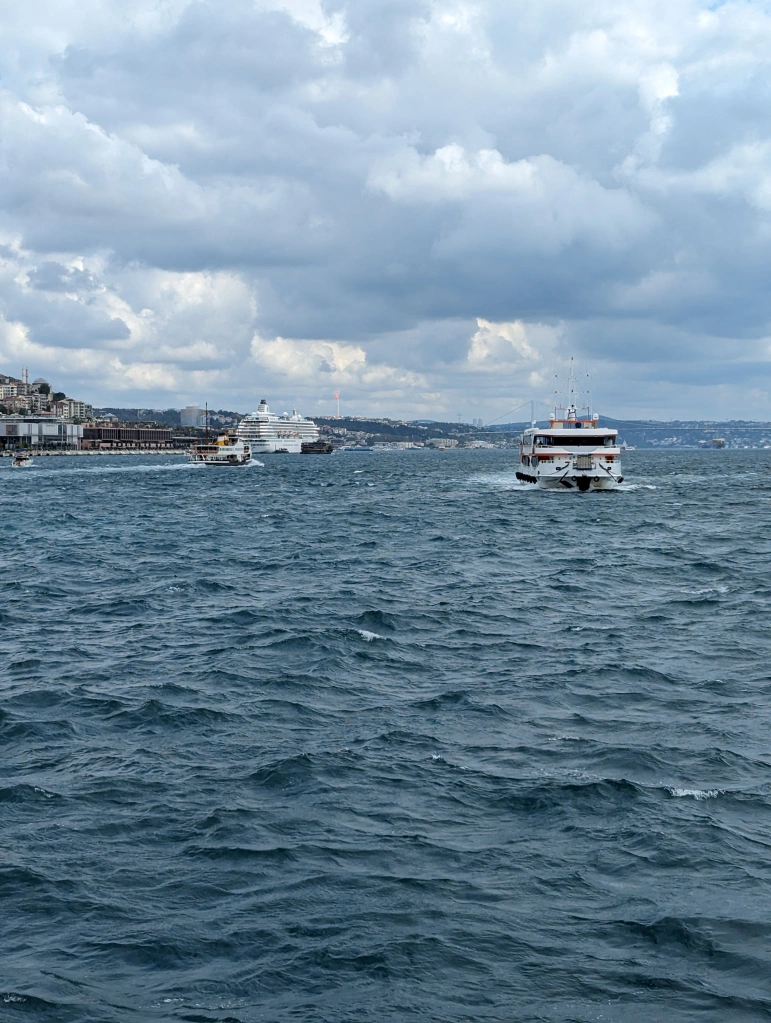

So having strode across the Galata Bridge, I planted my feet firmly in Karaköy. Not far from that spot, (about 20 minutes walk), is the Pera Palace Hotel where Agatha Christie was a frequent guest and allegedly wrote ‘Murder on the Orient Express’ from her room, 411. I can well imagine that an extended sojourn in Istanbul would bring out the writer in many of us – it’s that kind of place that stimulates the senses and beckons you to imagine and explore.
It was well past lunchtime, so I was hungry, and wandering down a side street, I soon found myself at the Gümrük Resturant. Perched on a seat outside the restaurant, I contentedly watched the world go by. The menu was inviting, and service was really helpful and friendly. It was a refreshing change from the usually overpriced tourist fare on offer in Sultanahmet, and almost immediately, you felt you were getting more ‘bang for your buck.’ The whole offering was much more acceptable and excellent in my opinion. Having been seated at my outdoor table, I ordered a glass of Efes beer which appears to be the local brew and was most acceptable. To accompany this, I ordered Pasta with Turkish Metaballs, and for 190 Turkish Lira (about £4.70), was good value for money.



The inside of the resturant was really interesting and I had a quick look around before I sauntered off down the lane and encountered some old guys passing the time of day who didn’t seem to be that keen on me taking their photo. Notwithstanding that, I carried on and headed for my next port of call: Galata Tower. This great stone edifice sits atop a hill and commands an unparlelled view (more about that later), so it was a reasonable slog to ascend said hill. Nearing the top, I was grateful to meet an elderley gent selling cold, bottled water for the very reasonable price of 5 Turkish Lira (£0.12).


Having been suitably refreshed, I pushed on up the hill towards Galata Tower itself. This obviously very popular tourist attraction was loudly and vividly announced by the sheer magnitude of people queuing to get inside and climb the ancient stone steps. I hurriedly bought my ticket from the booth, joined the long line and waited my turn as we slowly, but surely, edged towards the entrance. I remember watching a film recently long after my return from Istanbul, that featured the Galata tower, and the main charcater entered through the doorway into a palatial hallway with numerous rooms. It is nothing like that inside; it is as you would expect a stone, cilyndrical tower to be.
There are 3 levels that you can view İstanbul from, and all are equally breathtaking. İstanbul is a vast metropolis. I wouldn’t normally use the word metropolis, but with the size and vastness of this city, it seems to lend itself to that very word. I remember hearing an american guy talking on the phone, who sounded like a reporter, as he vividly and enthusiastically decsribed the panorama that lay before him. His account and depiction of Istanbul was so compelling that I really wanted to hear the entire conversation, but not wanting to appear to be eavesdropping, I slowly moved away. I remember thinking that we Brits lack some of that passion and excitement at times, because we are too busy being English and cool about everything. It’s good to be thrilled about a place, and there was much to stimulate the senses in this city where Europe reaches out and touches Asia.
As you stare out across this expanse of buildings and people, in any direction, you will see something interesting. Gazing out over the rooftop bars, restaurants, and people’s homes with their laundry drying in the sun, you can see so much, whether you are looking up the Haliç towards the Western District, or south towards Eminonou and Sultanahmet, with the impressive Sulamaniaye mosque commanding prime position. Alternatively, you can view the Bosphorus, snaking away into the distance, under the bridge of the same name, as it makes it’s slow and ponderous way north towards the Black Sea and Ukraine.
Gazing in the opposite direction, you will witness a never ending conveyeor belt of ocean going vessels travelling up from the Mediterranean, having navigated the Dardenelles Strait, and now coming clearly into view across the Sea of Marmara with the Prince’s Islands shimmering on the far horizon. For me, the Galata Tower is the ultimate lookout in İstanbul, situated as it is in the heart of the city, but nonetheless offering the most impressive of views. It is 100% worth your time and pennies, and so if you should find yourself here on the edge of Asia, factor it into your itinerary as it will not disappoint at all.

